Liverpool Cathedral is the largest church in Britain, and the fifth largest in the world. Construction began in 1904, funded largely through private donations from wealthy Liverpool residents during the height of the city’s commercial shipping success. Everything about it is on a massive scale: the central aisle height is 166ft (35m) and the internal length of the building is 160 yards (150m), more than 50% larger than an American football field; the tower is 331 ft (101m ) high, making it among the world’s tallest non-spired church buildings; the 9,765-pipe organ is likely the largest operational organ in the world; and the thirteen-bell peal is the heaviest in the world at 16.8 tonnes.
The cathedral towers over the city from St. James Mount—we could clearly see it from the marina nearly a mile away. We walked up to St. James Mount and spent an afternoon touring the spectacular building, including climbing to the top of the tower for sweeping views over Liverpool.
Below are trip highlights from November 4th, 2017 in Liverpool, UK. Click any image for a larger view, or click the position to view the location on a map. And a live map of our current route and most recent log entries always is available at http://mvdirona.com/maps
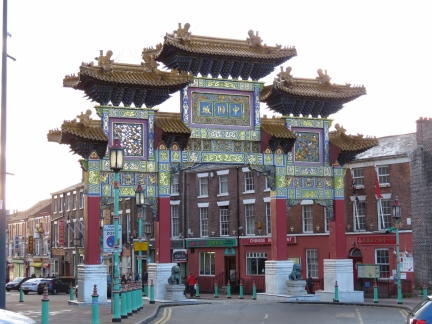 |
Chinatown Gate
Position: -2 58.57, 53 23.98
The ornate gate to Liverpool’s Chinatown, the oldest Chinese community in Europe.
|
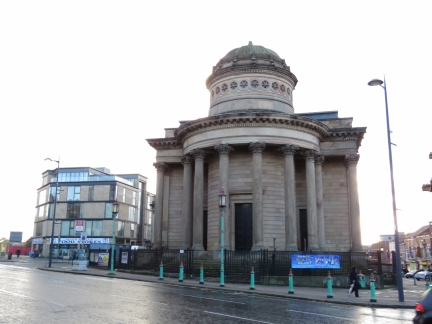 |
Congregational Church
Position: -2 58.57, 53 23.98
Liverpool’s Great George Street Congregational Church opened in 1841 and was designated a World Heritage Site in 1952. The church was converted into the community arts building formally nicknamed The Blackie and now officially named The Black-E.
|
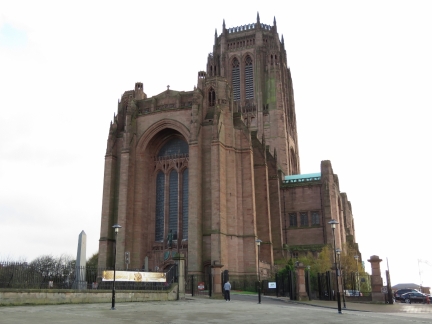 |
Liverpool Cathedral
Position: -2 58.44, 53 23.94
Liverpool Cathedral towers over the city from St. James Mount—we can clearly see it from the marina nearly a mile away. It’s the largest church in Britain, and the fifth largest church in the world. Construction began in 1904 and was finally completed in 1978. Early funding was largely through private donations from wealthy Liverpool residents during the height of the city’s commercial shipping success.
|
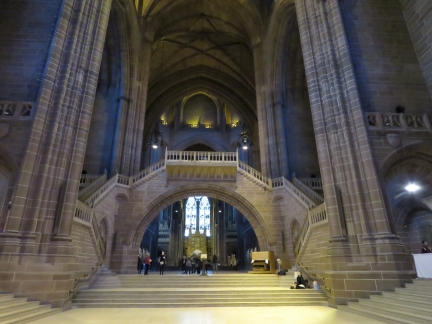 |
Interior
Position: -2 58.40, 53 23.85
It’s hard to convey in a picture how massive Liverpool Cathedral is inside. The central aisle height is 166ft (35m) and the internal length of the building is 160 yards (150m), more than 50% larger than an American football field.
|
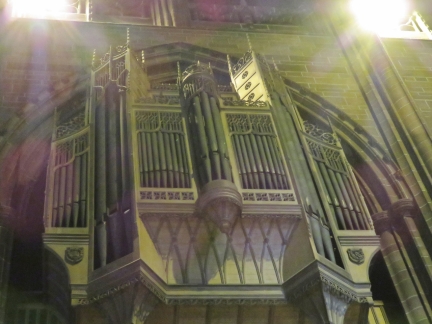 |
Organ
Position: -2 58.60, 53 24.13
With 9,765 pipes, the Liverpool Cathedral organ likely is the largest operational organ in the world.
|
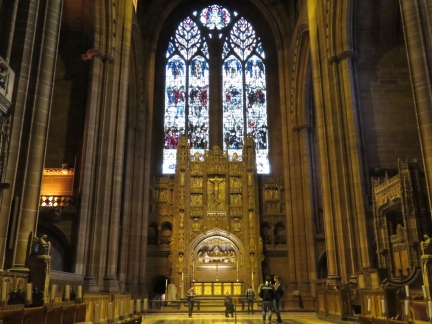 |
High Altar
Position: -2 58.38, 53 23.83
The beautiful High Altar in Liverpool Cathedral.
|
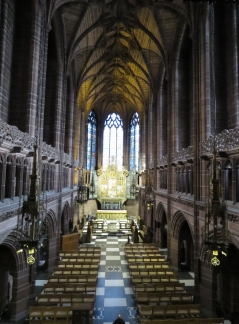 |
Lady Chapel
Position: -2 58.77, 53 24.22
The Lady Chapel was the first part of the church completed, in 1910. The chapel is as big as a medium-sized church, but is perhaps a tenth the size of Liverpool Cathedral.
|
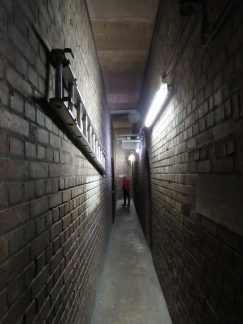 |
Central Tower
Position: -2 58.41, 53 23.86
Liverpool Cathedral’s tower is 331 ft (101m ) high, making it among the world’s tallest non-spired church buildings. Through a series of hallways, stairs and elevators, visitors can climb to the top for panoramic views of the city.
|
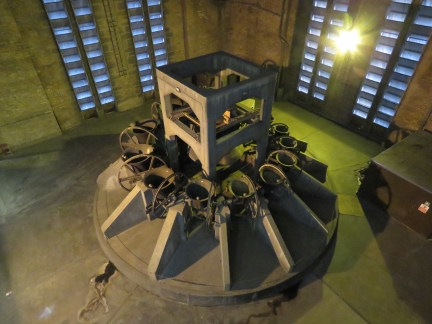 |
Peal
Position: -2 58.41, 53 23.86
Looking down onto the Liverpool Cathedral bell peal as we make our way up the tower. The main bell weighs 14.7 tonnes and the thirteen-bell peal is the heaviest in the world at 16.8 tonnes.
|
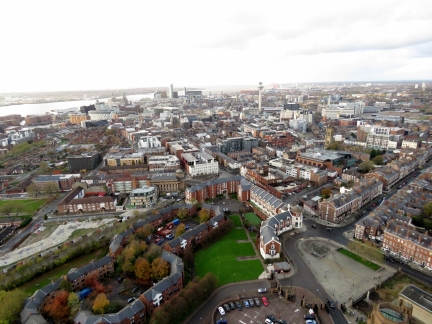 |
Downtown Liverpool
Position: -2 58.40, 53 23.85
The view from the top of the Liverpool Cathedral tower is impressive. This is looking to downtown Liverpool with Canning Dock at the far left and the Museum of Liverpool and the Three Graces left of center.
|
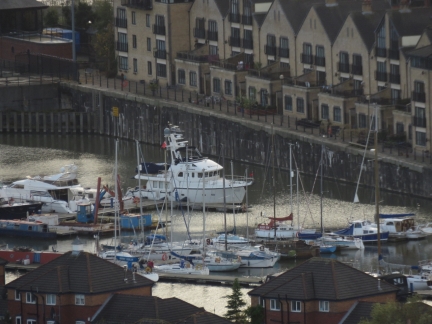 |
Liverpool Marina
Position: -2 58.39, 53 23.85
Dirona moored at Liverpool Marina viewed from the Liverpool Cathedral tower.
|
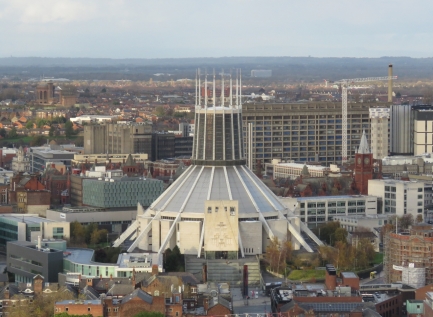 |
Metropolitan Cathedral
Position: -2 58.40, 53 23.84
The Roman Catholic Metropolitan Cathedral, just north of Liverpool Cathedral.
|
 |
Tower
Position: -2 58.38, 53 23.85
Enjoying the visit to Liverpool Cathedral.
|
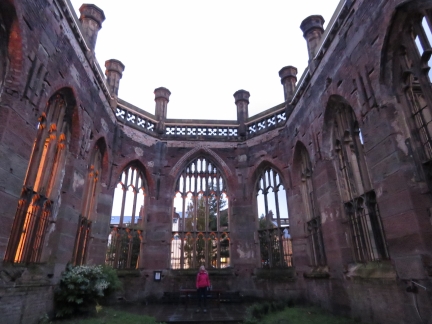 |
Bombed Out Church
Position: -2 58.49, 53 24.10
St. Luke’s Church, known as the Bombed Out Church, is a former Anglican parish that was badly damaged in World War II by German bombs during the 1941 Liverpool Blitz. It was never restored and now is a memorial to those lost in the war and also is used for events and functions.
|

|
Click the travel log icon on the left to see these locations on a map, with the complete log of our cruise.
On the map page, clicking on a camera or text icon will display a picture and/or log entry for that location, and clicking on the smaller icons along the route will display latitude, longitude and other navigation data for that location. And a live map of our current route and most recent log entries always is available at http://mvdirona.com/maps. |

If your comment doesn't show up right away, send us email and we'll dredge it out of the spam filter.